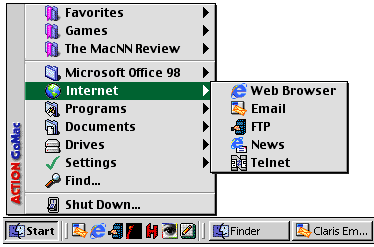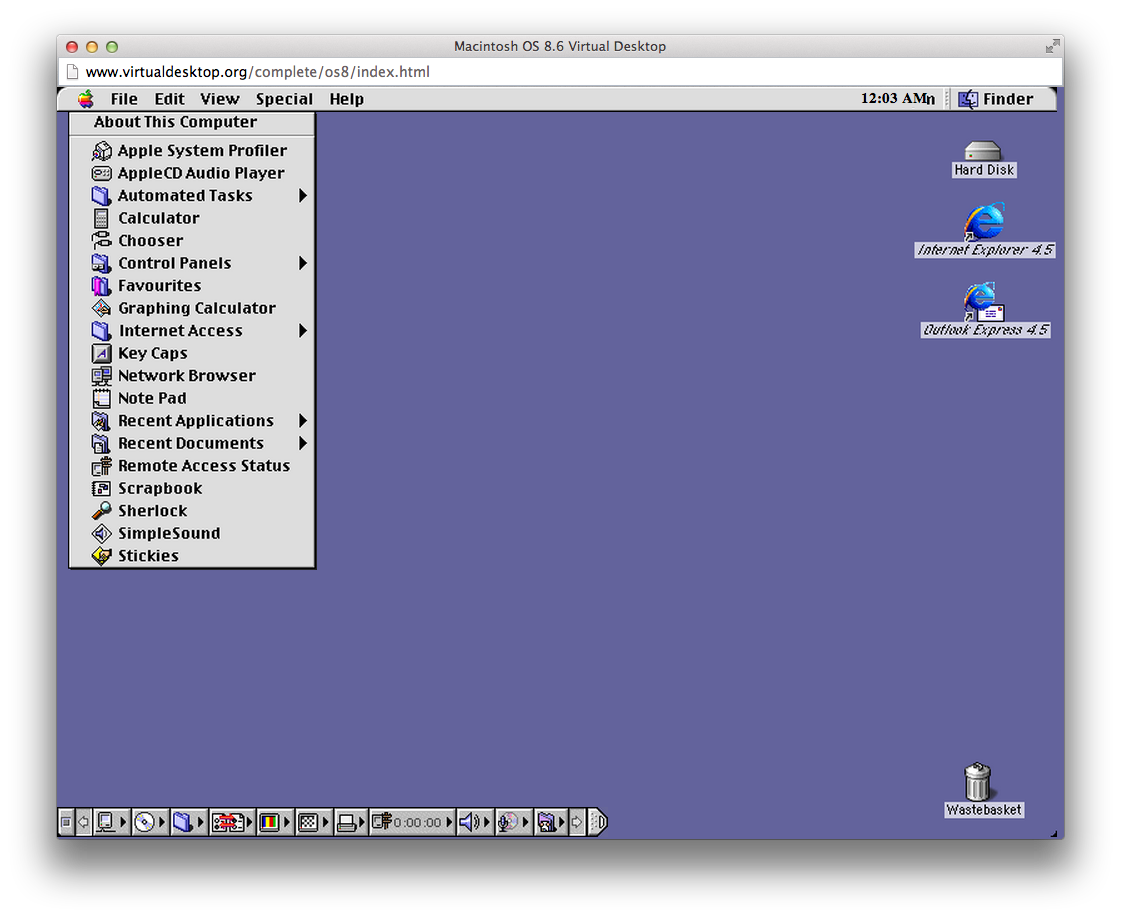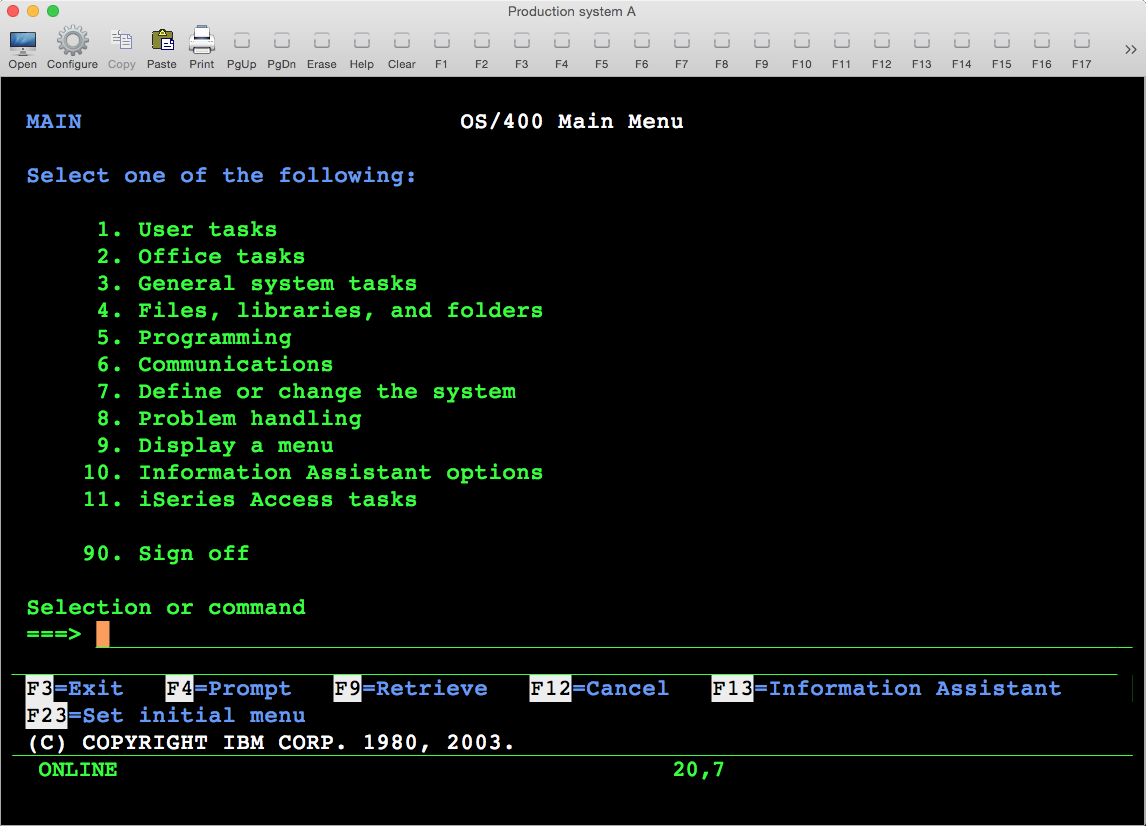

- #MAC OS 9 EMULATOR FOR MAC FOR MAC OS#
- #MAC OS 9 EMULATOR FOR MAC MAC OS X#
- #MAC OS 9 EMULATOR FOR MAC MAC OS#
- #MAC OS 9 EMULATOR FOR MAC DRIVERS#
- #MAC OS 9 EMULATOR FOR MAC UPDATE#
Main articles: Classic Mac OS § PowerPC emulation, and List of computer system emulators § Apple Macintosh with PowerPC CPUĪside from Apple-branded hardware that is still maintained and operated, Mac OS 9 can be operated in other environments such as Windows and Unix. Mac gamers also sometimes revert to Classic (often via emulation) or native OS 9 in order to play games that are not supported on OS X for example: Bugdom, Nanosaur, Oregon Trail, Civilization II, and the Marathon Trilogy. Mac OS 9 is also a popular choice for retrocomputing hobbyists. While Mac OS 9 is no longer supported by Apple, retail copies are still available from several Internet businesses at varying prices.Īlthough now classed as abandonware, as development on it has ended, it is still in use by those who cannot upgrade to OS X due to hardware limitations or prefer it to OS X.
#MAC OS 9 EMULATOR FOR MAC FOR MAC OS#
In recent years, unofficial patches for Mac OS 9 and the Mac OS ROM have been made to allow unsupported G4 Macs to boot into Mac OS 9 (G5 Macs still can't run Mac OS 9 at all since Mac OS 9 doesn't recognize the G5 processor), though this is not officially supported by Apple. Īny G4 Macs that have a 1 GHz and higher processor and all G5 Macs can not boot Mac OS 9 natively as the "Mac OS ROM" was never updated to allow those Macs, which were developed during the OS X era, to directly boot it. QEMU has experimental support for running Mac OS 9 using PowerPC G4 emulation. The PearPC PowerPC emulator does not support Mac OS 9. However, SheepShaver cannot run Mac OS versions newer than 9.0.4, as there is no support for a memory management unit. Mac OS 9 can be emulated by using SheepShaver, a PowerPC emulator available on multiple operating systems, including Intel-based Macs.

The Classic Environment remains in the PowerPC version of 10.4 however, x86 versions of OS X do not support the Classic environment. Developer documentation of the Rosetta PowerPC emulation layer revealed that applications written for Mac OS 8 or 9 would not run on x86-based Macs. In June 2005, Jobs announced that the Macintosh platform would be transitioning to Intel x86 microprocessors. Mac OS 9.2.2, released in December 2001, was the final version of Mac OS 9 and the "classic" Mac OS. In May 2002, at Apple's Worldwide Developers Conference in San Jose, California, Steve Jobs, accompanied by a coffin, held a mock funeral to announce that Apple had stopped development of Mac OS 9.
#MAC OS 9 EMULATOR FOR MAC DRIVERS#
In addition, some drivers and other software which directly interact with the hardware fail to work properly. They demonstrate screen redraw problems and lagging performance. Some Mac OS 9 applications do not run well in Classic. This requires Mac OS 9 to be installed on the computer even though computers that can run the Classic environment are not necessarily able to boot into Mac OS 9. This is achieved through running Mac OS 9 without access to its Finder inside OS X.

#MAC OS 9 EMULATOR FOR MAC MAC OS X#
PowerPC versions of Mac OS X prior to 10.5 include a compatibility layer (a shell) called Classic, enabling users to run applications and hardware requiring Mac OS 9 from within OS X. Addition of a "Window" menu to the Finder (introduced in Mac OS 9.1).CD Burning in the Finder (introduced in Mac OS 9.1).USB Printer Sharing, a control panel allowing certain USB printers to be shared across a TCP/IP network.An updated version of AppleScript with support for TCP/IP.Remote Access Personal Server 3.5, including support for TCP/IP clients over Point-to-Point Protocol (PPP).Improved font management through FontSync.Speakable Items 2.0, also known as PlainTalk, featuring improved speech synthesis and recognition along with AppleScript integration.A redesigned Sound control panel and support for USB audio.
#MAC OS 9 EMULATOR FOR MAC UPDATE#
A Software Update control panel for automatic download and installation of Apple system software updates.



 0 kommentar(er)
0 kommentar(er)
